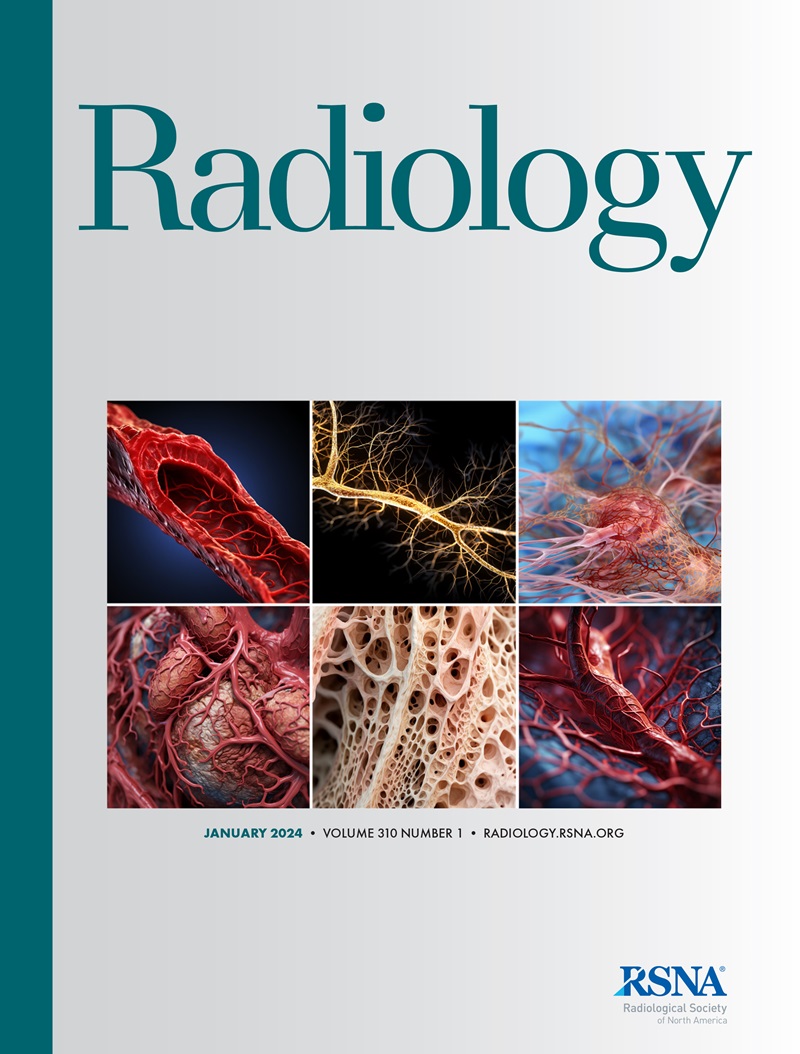Current State of Fibrotic Interstitial Lung Disease Imaging.
IF 15.2
1区 医学
Q1 RADIOLOGY, NUCLEAR MEDICINE & MEDICAL IMAGING
引用次数: 0
Abstract
Interstitial lung disease (ILD) diagnosis is complex, continuously evolving, and increasingly reliant on thin-section chest CT. Multidisciplinary discussion aided by a thorough radiologic review can achieve a high-confidence diagnosis of ILD in the majority of patients and is currently the reference standard for ILD diagnosis. CT also allows the early recognition of interstitial lung abnormalities, possibly reflective of unsuspected ILD and progressive in a substantial proportion of patients. Beyond diagnosis, CT has also become essential for ILD prognostication and follow-up, aiding the identification of fibrotic and progressive forms. The presence of fibrosis is a critical determinant of prognosis, particularly when typical features of usual interstitial pneumonia (UIP) are identified. The UIP-centric imaging approach emphasized in this review is justified by the prognostic significance of UIP, the prevalence of UIP in idiopathic pulmonary fibrosis, and its strong radiologic-pathologic correlation. In nonidiopathic pulmonary fibrosis ILD, progressive pulmonary fibrosis carries clinically significant prognostic and therapeutic implications. With growing evidence and the emergence of novel ILD-related concepts, recent updates of several imaging guidelines aim to optimize the approach to ILD. Artificial intelligence tools are promising adjuncts to the qualitative CT assessment and will likely augment the role of CT in the ILD realm.纤维化间质性肺疾病影像学研究现状
间质性肺疾病(ILD)的诊断是复杂的,不断发展的,越来越依赖于薄层胸部CT。在全面的放射学检查的辅助下,多学科讨论可以在大多数患者中获得高可信度的ILD诊断,并且是目前ILD诊断的参考标准。CT也可以早期识别间质性肺异常,可能反映了相当一部分患者未预料到的ILD和进行性肺异常。除了诊断之外,CT也成为ILD预后和随访的关键,有助于识别纤维化和进展形式。纤维化的存在是预后的关键决定因素,特别是当确定了通常间质性肺炎(UIP)的典型特征时。本综述强调的以UIP为中心的成像方法是合理的,因为UIP的预后意义,UIP在特发性肺纤维化中的患病率,及其强烈的放射学-病理学相关性。在非特发性肺纤维化ILD中,进行性肺纤维化具有重要的临床预后和治疗意义。随着越来越多的证据和新的ILD相关概念的出现,最近一些影像学指南的更新旨在优化ILD的方法。人工智能工具是定性CT评估的有希望的辅助工具,可能会增强CT在ILD领域的作用。
本文章由计算机程序翻译,如有差异,请以英文原文为准。
求助全文
约1分钟内获得全文
求助全文
来源期刊

Radiology
医学-核医学
CiteScore
35.20
自引率
3.00%
发文量
596
审稿时长
3.6 months
期刊介绍:
Published regularly since 1923 by the Radiological Society of North America (RSNA), Radiology has long been recognized as the authoritative reference for the most current, clinically relevant and highest quality research in the field of radiology. Each month the journal publishes approximately 240 pages of peer-reviewed original research, authoritative reviews, well-balanced commentary on significant articles, and expert opinion on new techniques and technologies.
Radiology publishes cutting edge and impactful imaging research articles in radiology and medical imaging in order to help improve human health.
 求助内容:
求助内容: 应助结果提醒方式:
应助结果提醒方式:


